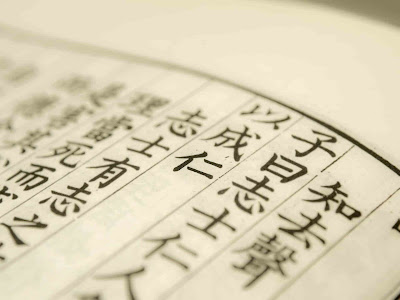When you walk through the streets of Hong Kong, chinese characters appear in front of you as part of a rainforest landscape, wildly, uncontrollable, arcane... Being analphabet is a delicious experience. And yet, little by little, you observe, the patterns start to unveil little by little a part of their sense... Learning chinese characters in immersion is fascinating to the point of becoming crazy. Life is far from the ridicule idea of the film The 13th warrior, where Ahmad ibn Fadlan, aka Antonio Banderas, learns the language of vikings just by listening to it in groups conversations around a nigh bunfire.
In this beautiful experience of walking naked in the jungle of chinese writing, you can start making sense of it by noticing some patterns. Look at this picture. The Green Lake hotel (or Green River, in Tagalog) has the same sign in the façade and in the billboard. You can recognise the two characters of the word "hotel" 賓館 in the left side of the inscription of the façade, and in the right side of the billboard.
Besides, being Cantonese and Mandarin head-final languages, the noun is generally preceded by its modifiers. This means that the name of the hotel would precede the word for "hotel". In this way, we can see that the inscription in the façade has to be read from right ot left, whereas the one in the billboard, from left to right. Anyway, we know that Chinese can be written indistinctively from top to down, from left to right or from right to left. So the question is "Why use both ?"

The answer could be found in history: the order right-to-left was widely used in Hong Kong until the late 60s or early 70s, as a result of the internationalization of its industry, which brought an increasing Western influence. British culture is visible in many aspects of Hong Kong life, from the use of cuttlery to the passion for milk tea, but only in a few aspects it permeated Chinese language (notably with the introduction of loan words), and in none it affected Chinese writing. This right-to-left order, which is still the main writing order in Japanese writing, as it can be seen in the majority of published books, has been almost compleely replaced by left-to-right order in Hong Kong.
Therefore, most of Hongn Kong boards displaying a right to left order date often from before the 70s. Nevertheless, this writing order can als be seen in modern boards of some institutions, like schools, maybe conveying an adscription to traditional values, or maybe just for aesthetic reasons. In this way, we could imagine that we have two word orders, belonging to different times: the inscription in the façade would be earlier than the one in the billboard.
But a closer look to the patterns of the image can let us advance a little more in our understanding: if the right to left order was the most common one when the sign was posted, maybe there is another reason to choose the left-to-right order. Is there any reason why it should be like that? Look better. Yes. Yes! The billboard is a trilingual inscription, in Chinese, English and Tagalog, and the two language with latin alphabets are displayed as sublinear glosses of the original Chinese. This looks like a good reason that completes the precedeing answer: the tendency for writing from right to left is reversed, in part, to facilitate the glossing in those bilingual sign posts that are so common in Hong Kong.



Comentarios
Publicar un comentario